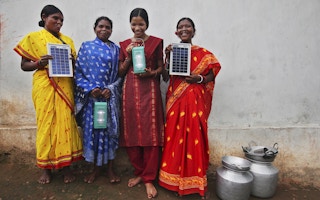India will surpass its commitments on greenhouse gas emission checks and energy transition to renewables made under the 2015 Paris climate pact 10 years ahead of time, making it a global leader in climate action.
“We had pledged to reduce emissions intensity by 33-35 per cent by the year 2030 and have already achieved 21 per cent,” India’s Environment Minister Harsh Vardhan said at the annual climate summit being held in Katowice, Poland. If the reductions were to include the food and agriculture sector, the reduction is around 26 per cent, the minister said.
India’s climate action plan under the Paris Agreement promised that it would increase the share of renewables to 40 per cent of its power generation capacity, reduce its economy’s emission intensity by 33-35 per cent by 2030 from levels seen in 2005, sequester an additional 2.5-3 billion tonnes of carbon dioxide through additional forest cover.
“
Right now India’s goal is to see that whatever we have promised, we achieve it well before time.
Harsh Vardhan, Environment Minister, India
The goal of adding to the forest cover is the one lagging behind schedule. India’s forest cover has increased by one percentage point in the past one year, Harsh Vardhan said at the December 2-14 summit.
The minister said being on the road to achieve two of the three main goals does not necessarily mean India will submit a more ambitious pledge by 2020. “Right now India’s goal is to see that whatever we have promised, we achieve it well before time.”
Second biennial update
India is gearing up to submit its second biennial update to the UN Framework Convention on Climate Change (UNFCCC), stating that the country is on track to achieve its Paris pledges. The report will be released in New Delhi after the Katowice climate summit gets over in December 14, an environment ministry official told indiaclimatedialogue.net in Katowice. The report is ready, but needs formal clearance from the union cabinet. The deadline to submit it to UNFCCC is December 31.
India has said in its national energy plan that it will generate as much as 56.5 per cent of its electricity from non-fossil fuel sources by 2027. Besides the coal-fired plants that are already being built, the country does not need to build new ones, it had said last year.
To reduce the emissions intensity of its GDP by 33-35 per cent by 2030 from the 2005 level, India is rapidly installing renewables capacity; the goal is to reach 175 GW of renewables generation by 2022. It is on track to develop as many as 25 solar industrial parks, in addition to anchoring the International Solar Alliance that intends to boost renewable energy use in sunshine-rich countries.
India’s National Electricity Plan of 2018 has forecast that fossil fuel capacity would shift from 218 GW, or 67 per cent of 2017 installed capacity, to 264 GW, or 43 per cent of total installed capacity by 2027.
Non-fossil fuel capacity
An estimate by the US-based Institute for Energy Economic and Financial Analysis (IEEFA) agreed that India will achieve its 40 per cent non-fossil fuel capacity target a decade early. IEEFA estimates that India’s thermal power capacity will be 226 GW, or 63 per cent of India’s total of 360 GW, by March 2019. By the close of 2019, its non-fossil fuel capacity is set to exceed the 40 per cent share for the first time.
India had installed over 25 GW of solar power capacity by September 2018, a fourfold increase in less than three years. Total renewable energy installations across India reached 75 GW by September 2018, representing 21 per cent of total installed capacity and generating a record high of 11.9 per cent of all electricity in the three months ended September 30.
India has also introduced emissions standards for new thermal power plants, including retrofitting requirements for existing plants. The Central Electricity Authority of India is planning a progressive closure of up to 48 GW of end-of-life thermal power plants by 2027. Already 8 GW have been closed since April 2016.
This story was published with permission from The Third Pole.










